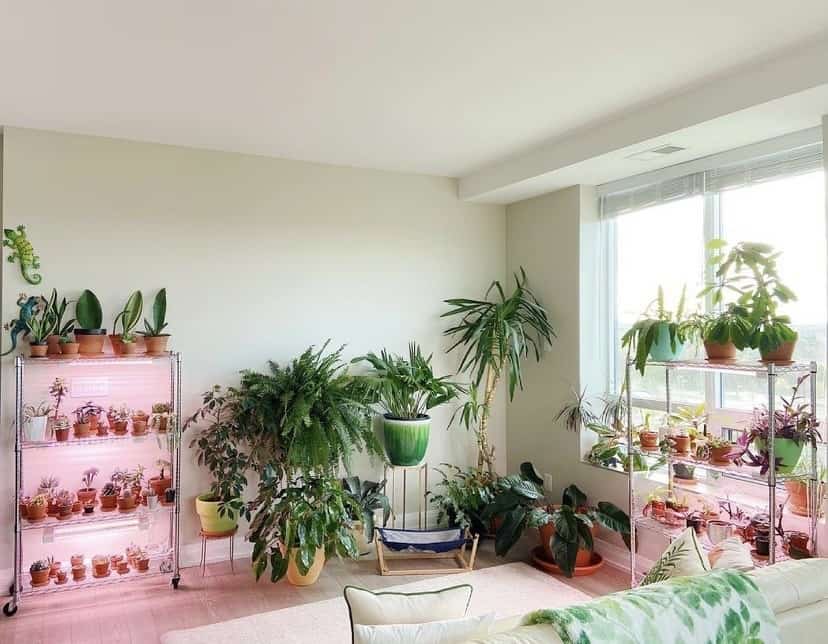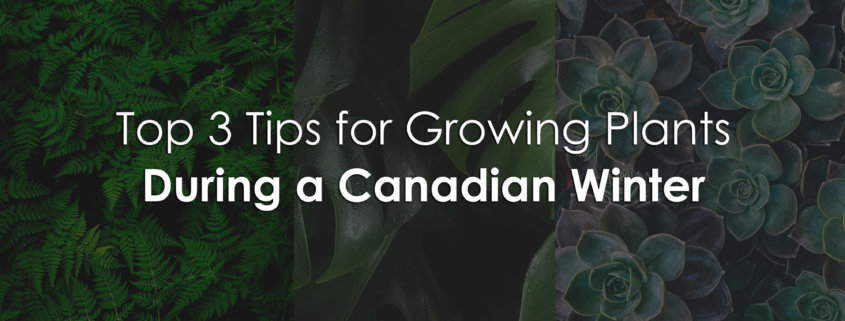Top 3 Tips for Growing Plants During a Canadian Winter
Today’s feature is all about houseplants and how to make them thrive in your home. 
Julia Lewis runs an Instagram account dedicated to houseplants. She frequently shares plants, tips and tricks, and stunning, colourful images of her houseplants.
Julia has been running this Instagram account since early 2020; however, she has been collecting houseplants since 2015. She has a wide variety of plants from succulents, broad-leaf foliage, and even carnivorous plants. Currently, she has over 200 houseplants in her apartment.
She is passionate about sharing her love of houseplants on her Instagram, and her experiences growing them in her apartment in Ontario, Canada. She notes it can be difficult to grow tropical plants in Canada due to the climate differences. Most of her plants are from tropical regions of the world, making Canada’s winters the exact opposite of what these plants need to flourish.
She has decided to share with us her top 3 tips for successfully growing houseplants in a temperate region.
Tip Number 1: Get a Humidifier
While Julia doesn’t live in Montreal, she still experiences a very similar climate living in Southwestern Ontario. The winters are cold, dry and most days are cloudy and grey.
When it gets cooler out, she mentions a number of environmental factors that negatively impact houseplants. First, the majority of common houseplants are not from around here. She states that most houseplants you see in stores are from tropical regions or near-tropics, which are regions closer to the equator. As such, they don’t thrive in cooler temperatures as they are not adapted in a way to tolerate it.
Many individuals presume that having their heater on resolves this issue. Sadly that’s incorrect, she says. The heater constantly being on makes the air dry, which tropical houseplants don’t enjoy.
Julia says when plants are exposed to low humidity, the leaves may look dull, feel dry to the touch, and the leaf margins may curl.
This is why Julia says investing in a humidifier is crucial. Humidifiers are designed to reintroduce water to the air, thereby increasing the humidity of the living space. Her favourite humidifier is one of the larger ones on the market, so she does not need to fill it up as frequently, saving her time.
Tip Number 2: Get Grow Lights
Another concern with Canadian winters is the decreased amount of sunlight. The days are shorter and the sun is farther away. She mentions the same window may provide enough sunlight in the summer, but in the winter it likely will not bring in enough light.
With the decreased amount of sunlight, one’s houseplants may start showing signs like dull colored leaves, slow growth, and etiolation. Julia described etiolation as the fancy term for plants growing tall and skinny. Basically the internodal space gets longer, creating more space between each leaf making the plant look spindly. This is why Julia says grow lights are essential for this time of year. They will make your plants grow faster and look so much healthier.
There are a few grow light varieties that Julia uses in her home. First, she likes to use grow light bars for her shelving units. These grow lights allow for quick installation, low power usage, and enough light to keep her plants happy. She places the plants needing the most light on the center of the shelf and the ones requiring less light to the perimeter of each shelf, to ensure they all have enough light to thrive.
She also recommends investing in some clip-on grow lights. These lights are generally attractive and blend well into one’s home decor. They can be easily clipped onto a shelf, table, or windowsill allowing for many possibilities. She likes to use these types of grow lights for her larger plants, as she can clip them to a nearby table or plant stand.
Further, she says if you are going to invest in a grow light, you should get a timer. That way you can save yourself the time and effort of turning them on and off each day. You can also go away for a few days and not be worried about disrupting their light cycle.
Tip Number 3: Don’t Water Your Plants With Cold Water
While Julia mentions this tip isn’t totally winter-specific, this issue can be even worse in the wintertime of cold climates. Like she mentioned earlier, most houseplants are adapted to live in warm, humid climates. The water they receive out in nature is warm rain. Watering these plants with cold tap water can shock the roots of the plant and hinder their growth.
She mentions that the care cards stating “Just give the plant 6 ice cubes weekly” is terrible advice. While it may be the correct amount of water for the size and type of plant, the water is still icy cold when it reaches the roots. Plants showing signs of root shock may drop leaves, have significantly stunted growth, and permanent root damage.
Julia recommends either filling up your watering can with warmer water than what comes right out of the cold tap, or filling up the watering can and letting it sit out at room temperature for 2 hours. This way the water can adjust to the temperature of the room and won’t shock your plants.
Further, she mentions it’s best to heavily water a plant then let it dry out. This can help prevent root rot as the plant is not always sitting in soggy soil. She also notes it’s important to not let the soil fully dry out. When the soil is around 80% dry and the pot feels much lighter it’s time to water the plant again. It’s important to see water come out the bottom of the pot to ensure all the soil has been fully saturated.
Final Words
Julia can provide some amazing educational tips about growing houseplants while also bringing some colour to your Instagram feed. From tips like the ones she shared today, to growing plants with pets or in a small space, I’m certain you will find something valuable from her page. Be sure to check out @juls.jungle on Instagram for more tips. Until Next Time!






